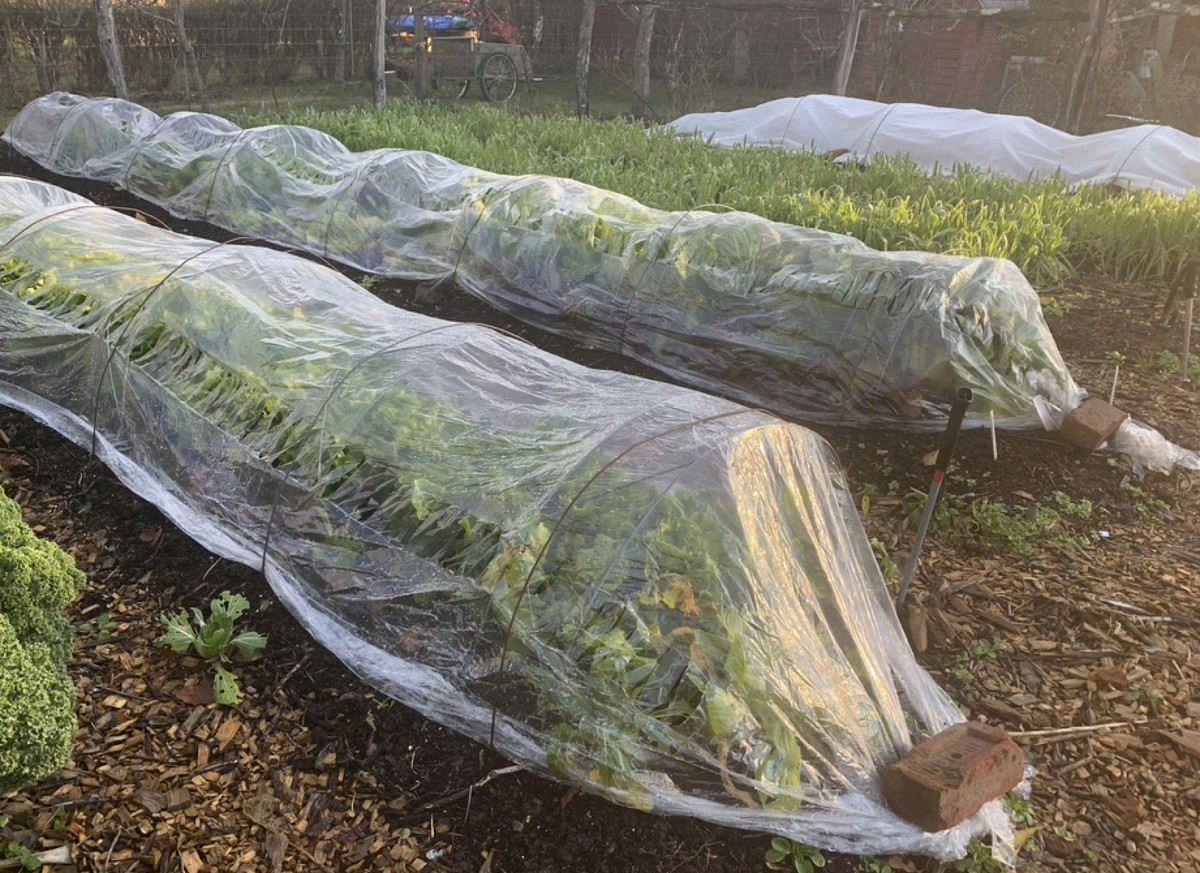
This undated photo shows an autumn vegetable garden in New Paltz, N.Y. Hardy vegetables such as lettuce, endive, and arugula can be harvested well into autumn even in northern gardens with some protection from "tunnels" covered with clear plastic or row covers. (Lee Reich via AP)
Many gardeners, even in colder regions, inch closer and closer each year to the goal of growing a year-round supply of vegetables.
Corn, peppers, green beans, and okra are tucked away in freezers, tomatoes are canned, and turnips, beets, and winter squashes can be in "fresh" storage in refrigerators, and even cool mudrooms, garages and basements.
Best of all, though, are those vegetables that can still be picked fresh from the garden. No reason to throw in the towel yet: These vegetables can continue on through some snow and temperatures dropping to the teens.
Lettuce, endive, spinach and parsley are among the cold-hardiest vegetables. Except for parsley, which requires a long season so needs to be sown earlier in summer, late summer plantings of these cold-hardy vegetables could have begun just as tomatoes, peppers, cucumbers and other warm season crops were waning. That row of parsley might no longer looks like a dense green, miniature rococo landscape, but it's still tasty.
Other vegetables round out the fresh salads. Rocket, or arugula, is quite cold-hardy. A few radishes are still crisp and pungent.
One of the hardiest of fresh salad greens, and also one of the tastiest, is mache, also known as corn salad. The delicate flavor and tender, spoon-shaped leaves belie this plant's tolerance for frigid weather. Rather than plant mache, I just let it plant itself: Overwintered plants self-seed in early summer but the seeds don't sprout until the cool weather of later summer. I transplant the young plants in early autumn.
Over the years, my own autumn salad vegetables have greeted cold weather beneath a variety of protective structures. One year, they were sheltered beneath homemade plexiglass A-frames., another year beneath miniature glass greenhouses held together by wires, and yet another year within bottomless wooden boxes covered with clear glass.
This year, I draped "floating row covers" - diaphanous materials that hold in some heat yet allow passage of air, light and water - on metal hoops over my lettuces and endives. Some beds get metal hoops draped with clear plastic, which lets in more sunlight, but not as much cold protection. Now's not too late to rig up some protective covering for these cold-tolerant plants.
Leaves of any salad plants in sheltered nooks often remain lush green and turgid long after their counterparts at more exposed sites have turned watery green and flaccid. For instance, spinach and lettuce planted with their backs against a house or garage wall are not exposed to quite as much cold as plants growing farther away. And any structure, even a low stone wall, soaks up heat as the sun beats on it by day, then releases this solar energy gradually through the night, to the benefit of nearby plants.
This time of year, tender, edible leaves are least likely to be found on plants given an eastern exposure. Leaves frozen at night cannot stand immediate thawing from the morning sun.
Although spinach, lettuce, mache, endive and parsley are alive, they're not growing. The weather's too cold and there's too little light. The leaves of these plants are just sitting, waiting to be harvested.
Very soon, temperatures will get low enough to put a permanent end to the fresh vegetable harvest for the season, at least here in Zone 5 (average minimum temperature -20 degrees Fahrenheit).
The roots of most spinach, leek, parsley and corn salad plants, and maybe a few of the lettuce plants, will survive outdoors, even though their leaves will freeze. In the spring, these roots will fuel growth of succulent new leaves, the first harvest next season, well before any new seedlings are large enough to harvest.
I contend that those first pickings in the spring and these last pickings in autumn taste better than any salad greens you can buy.
___
Lee Reich writes regularly about gardening for The Associated Press. He has authored a number of books, including "Weedless Gardening" and "The Ever Curious Gardener."